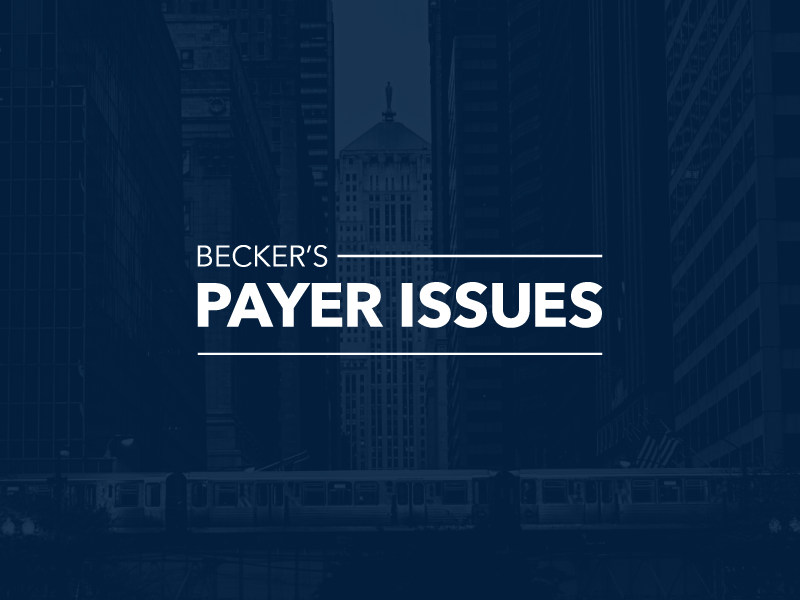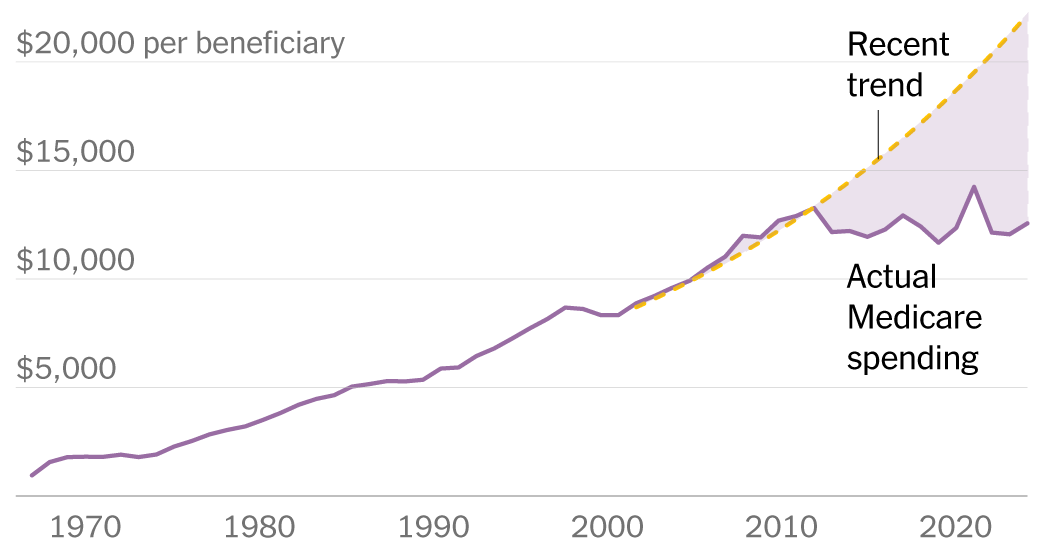- Joined
- Oct 19, 2004
- Messages
- 536
- Reaction score
- 833


UnitedHealth Group's 5 highest-paid executives
UnitedHealth Group CEO Andrew Witty was paid $20.9 million in total compensation in 2022.www.beckerspayer.com
The question is always "intent".It’s fascinating that we all know many physicians that overdo it - we all talk about it, we all see it. I’m seeing it as a person doing PA all the time.
Amongst our phone calls and chats and group messages we know that some of our colleagues are milking the system. Not one of us would disagree (I think). From the 15-20 fx bone Mets, to the academic centers doing 44 fx protons for prostate, etc.
Yet, it’s always the “grifters” fault.
I have not reviewed one case that there wouldn’t be controversy over. Every single case there is a legit issue. There is one I’m steaming about right now - it is incredibly wasteful spending.
If all of you spent 1 week in my seat, I think your view of who is the grifter would become much more fluid.
This gets incredibly complicated very quickly, especially when you take reimbursement into account. Who is more of the bad guy: someone in private practice treating prostate in 44 or 28 fractions with unfavorable reimbursement rates, or someone at a PPS exempt center treating yet another bone met/oligoprogressive disease with SBRT?It’s fascinating that we all know many physicians that overdo it - we all talk about it, we all see it. I’m seeing it as a person doing PA all the time.
Amongst our phone calls and chats and group messages we know that some of our colleagues are milking the system. Not one of us would disagree (I think). From the 15-20 fx bone Mets, to the academic centers doing 44 fx protons for prostate, etc.
Yet, it’s always the “grifters” fault.
I have not reviewed one case that there wouldn’t be controversy over. Every single case there is a legit issue. There is one I’m steaming about right now - it is incredibly wasteful spending.
If all of you spent 1 week in my seat, I think your view of who is the grifter would become much more fluid.
IGRT for abdominal mets or long field bone mets? I have to P2P this fairly often.I have not reviewed one case that there wouldn’t be controversy over.
Did you see the data on Medicare spending stabilization!Globally, overutilization has not been shown to be a problem in the us health system

The prostate fraction war is over, I believe. 5-44 should be okay for all patients. You certainly won't lose an appeal. And always appeal.This gets incredibly complicated very quickly, especially when you take reimbursement into account. Who is more of the bad guy: someone in private practice treating prostate in 44 or 28 fractions with unfavorable reimbursement rates, or someone at a PPS exempt center treating yet another bone met/oligoprogressive disease with SBRT?
Does the intent of the individual matter if the system as a whole is being hurt?
Thanks for sharing your experience. I think it should be obvious to everyone that the docs Simul is speaking of are what created the need for prior auth in the first place. If everyone was practicing SOC medicine then I don’t think prior auth would exist (or it would at least be fairly automatic)The prostate fraction war is over, I believe. 5-44 should be okay for all patients. You certainly won't lose an appeal. And always appeal.
Oligo is really challenging - I don't know the answer to that.
What I'm talking about is nonsense. I don't want to frame it as community vs academic, b/c they do it in different ways. Protons protons protons from the big guys and these are very high ticket. The community guys with protons are far more EBM than the big academic centers. The egregious proton stuff comes from places and people you have all heard of, not the single gantry joint in some suburb. Community guys do 33 fx for stage I breast and DCIS. You'd better believe we knock those down, but pure Medicare and some commercial do not. Something like 40% of patients that should get hypo don't. And we know hypo is better, so this is just bad behavior. Making a patient come in for >2 weeks for bone mets is evil. This is not seen from academic centers, but routinely from FL/TX. Derms do the daily IGRT and daily 77280 for skin cancer. They are never academic.
IGRT for abdominal mets or long field bone mets? I have to P2P this fairly often.
Also, hippocampal sparing WBRT a few years ago. Hasn't come up recently.
But most docs are reasonable. (Both practitioners and reviewers). The big grifters are corporate leadership. If one aspires to this, you're not getting my respect.
~20M annual compensation? for what? to prioritize shareholders. It's a stupid club. It's not really saving anybody any money except for health plans (who don't need savings).
Case based compensation is roughly correct. Without carve outs. I'll support single payor any day.
Insurance is a racket. UHC is 11th largest company globally by revenue. What is their great innovation?
Community guys do 33 fx for stage I breast and DCIS. You'd better believe we knock those down,
Thanks for sharing your experience. I think it should be obvious to everyone that the docs Simul is speaking of are what created the need for prior auth in the first place. If everyone was practicing SOC medicine then I don’t think prior auth would exist (or it would at least be fairly automatic)
Prior RT - BCS contra-indication. Would suggest mastectomy.Are there any reasons why standard fraction might be better than hypo? For the record, I use hypo in about 90% of my patients..
e.g. prior radiation or sensitivity to radiation exposure
postoperative complications (swelling)
unusual anatomy either natural or from implants
pacemaker proximity
Yes, the "damage" that bad docs do to milk the system is not ok, but the damage done by heavy handed profit driven PA and regulatory capture is far far greater, orders of magnitude greater.
If we snapped our fingers and eliminated PA, the worst case scenario, maybe the cost would go up 10%. But patients, and doctors, would be better.. even if an occasionally unnecessary study is done, it would seem.
Discuss.
The data suggests that a very high rate of RO denials are overturned and approved.
Are there "docs" that create a need for prior auth or is it purely a mechanism to maximize profit shrouded in a myth of quality improvement?
I think it's the latter. How many things do we do to "prevent" "bad" doctors? How many of those conveniently drive revenue and profit for companies? How many times a year do we hear about those bad doctors that slip through and cause a bunch of harm?
MOC? Certification? Prior Auth? Practice Accreditation?

You sound.. I believe there is a word for it.. obnoxious.Prior RT - BCS contra-indication. Would suggest mastectomy.
For the rest - total dose is lower with HF and all studies show equal or less toxicity.
Postop complication - boomer reason; not real. No change noted in any study or from high volume center. Would have same or worse problem with CF.
Unusual anatomy / implant reasons - boomer reason; I can make an allowance for implant with huge eye roll, b/c data shows its fine. In addition you can do partial breast 26-30/5 or 40/15.
Pacemaker proximity - boomer reason; nothing to do with HF. If you can do CF, you can do HF
What else did I hear from 2010 - now from people?
- DCIS
- They got chemo
- They are triple negative
- They are high grade
- They are large breasted
total burn down and then go


You can hold on to this til the end and call me names.. maybe even a racist oneYou sound.. I believe there is a word for it.. obnoxious.
Noninferiority trials and extracting subgroups from trials and saying "look, those patients were in there, and thus they all do the same" isn't the same as a randomized trial with careful endpoints looking at cosmesis/fibrosis. "would have the same" isn't the same as "had the same, or better/worse."
As always: Anyone who does PA has a profit motive to reduce spend, increase the 3rd party's profit/position with the insurer, and generate bonuses for itself.
Yes, the "damage" that bad docs do to milk the system is not ok, but the damage done by heavy handed profit driven PA and regulatory capture is far far greater, orders of magnitude greater.
If we snapped our fingers and eliminated PA, the worst case scenario, maybe the cost would go up 10%. But patients, and doctors, would be better.. even if an occasionally unnecessary study is done, it would seem.
Discuss.
our salary if pro only in RadOnc is 1/4 of the payment bc of this absurd tech prof ratio.Srs our income only makes up 10% of healthcare expenses.
NotMatt, I'll let you field my calls for a week, let's see if you feel the same way!
I've had 3 docs send me VMAT plans that doubled or tripled the heart dose compared to 3D plan. One still justified it b/c "well the lung dose". We aren't exactly seeing patients get pneumonitis and dying. There is a lot of literature on this. Save the heart. Try to save the lung, but save the heart. And, smart board certified docs are twisting themselves into knots to justify treating with IMRT. And I like IMRT. I just don't like it used stupidly.
I've not had Evicore promote any "peer review" or quality. But, several of my callers have been happy with my comments. I had a guy add 5 fractions last week. How many prior auth reviewers do that??
I did forget to say welcome back from forum vacation. Sorry about that!Pulling the race card bro? Seriously? Anyone can be obnoxious ...as you have just demonstrated. And nothing is more arrogant than the new found knowledge of youth. Or, as my teenagers like to say "I know everything I need to know."
Arguing sub groups is like arguing about who had the best dish at Thanksgiving. Its fun, but meaningless.
I don't think "everyone is better off with hypo" but just for fun, whats your stance on doing it with RNI? Yes, I know there is some data from overseas with good results and decent follow up. The problem with breast, which is the worst, is that some late complications are ..late.
Five fraction forbreastthe target volume will be the worldwide standard for stage 0-3 by 2035.
I’m going under 1 fx for everything in 5 years. Leaning towards zero in 10 unless we right this course.Fixed it
I did forget to say welcome back from forum vacation. Sorry about that!
It’s okay to see the world pass you by. It’s going to happen to me, too, and I’ll probably be not graceful about it. For stage 1, there is never going to be a subgroup that benefits from historic fractionation of 1.8-2.0.
For RNI, we all know the prospective data that we use as rationale for PMRT had mostly HF. Somehow, we can extrapolate in that direction but not the other. But, I did hypo during pandemic. Way better tolerated. I don’t see a lot of breast now.
The guidelines don’t state a preference. So, I allow the most expansive reading.
Zero fraction...Five fraction for breast will be the worldwide standard for stage 0-3 by 2035.
Yes some PA is service contract based. PA gets a small fixed rate.It is totally false that PA is always profit motivated. I work for a self insured hospital and have treated a number of staff, and sometimes have to deal with the PA. The insurance company is deploying PA as a performative gesture to employers.the hospital is paying the bill.
It is actually in the insurance company’s financial interest that the bill/radiation services are priced as high as possibe since the employer (hospital) is the one actually paying the bill and United is just taking a percentage.
It is amazing how many docs don’t understand the differing “insurances” out there. The majority of Americans recieve insurance through self insured employers. Why is this so hard to understand?
Yes, this is true, but most Americans still obtain insurance through self funded employers,Yes some PA is service contract based. PA gets a small fixed rate.
But the fat stacks happen when PA "buys" the insured risk and ratchets down the cost.
Does PA actuarial look forwards win most of time?
You better believe son..
Surprised more haven’t been commenting how icky this study isMaybe we will get case based payments of some form. I'd bet on it. Then we will all be caught up to the world.
Maybe people will then finally admit that FFS did influence their practices? I wouldn't bet on it.
Maybe.
Wait but, hey girl, hey! Hot off the press from the ASTRO Presidential-Elected Department, a timely article informing breast cancer irradiation:
And, a remarkable "interpretation":
"After a median follow-up of 39·3 months, non-inferiority of the hypofractionation group could not be established. However, given similar tolerability, hypofractionated proton PMRT appears to be worthy of further study in patients with and without immediate reconstruction."
Well there you have it. Even in the face of a prospective trial that they designed (quite permissive IMO!), the investigators believe that hypofractionated proton therapy is not not inferiorly toxic, but only a little, or $omething.
With regard to evidence based clinical reasoning, I love to quote one of my favorite scientists of all time:
"Life... uh, finds a way"
This is truly embarrassing that this woefully underpowered study is published in Lancet OncologyMaybe we will get case based payments of some form. I'd bet on it. Then we will all be caught up to the world.
Maybe people will then finally admit that FFS did influence their practices? I wouldn't bet on it.
Maybe.
Wait but, hey girl, hey! Hot off the press from the ASTRO Presidential-Elected Department, a timely article informing breast cancer irradiation:
And, a remarkable "interpretation":
"After a median follow-up of 39·3 months, non-inferiority of the hypofractionation group could not be established. However, given similar tolerability, hypofractionated proton PMRT appears to be worthy of further study in patients with and without immediate reconstruction."
Well there you have it. Even in the face of a prospective trial that they designed (quite permissive IMO!), the investigators believe that hypofractionated proton therapy is not not inferiorly toxic, but only a little, or $omething.
With regard to evidence based clinical reasoning, I love to quote one of my favorite scientists of all time:
"Life... uh, finds a way"
I have real concerns abt bed and Bragg peak effects w/protons and that hypofract won’t translate.I suppose people should be doing 5-6 weeks of proton PMRT instead of 3 based on this?
Setting yourself up to win....and then losing....and then claiming victory.Sorry to perseverate but the non-inferiority margin was 10%. Control arm expected to be 10% they would accept a doubling of complications (20%) and conclude non-inferiority. WTF?
